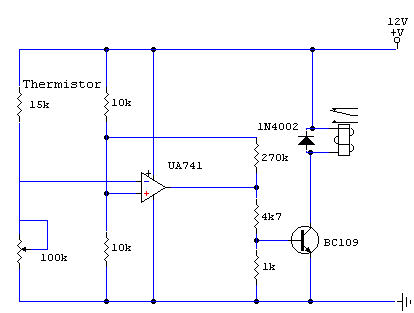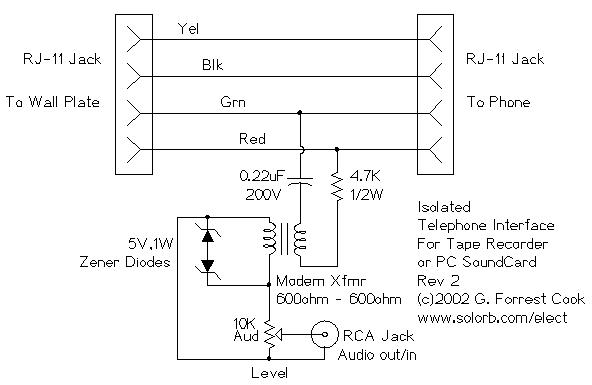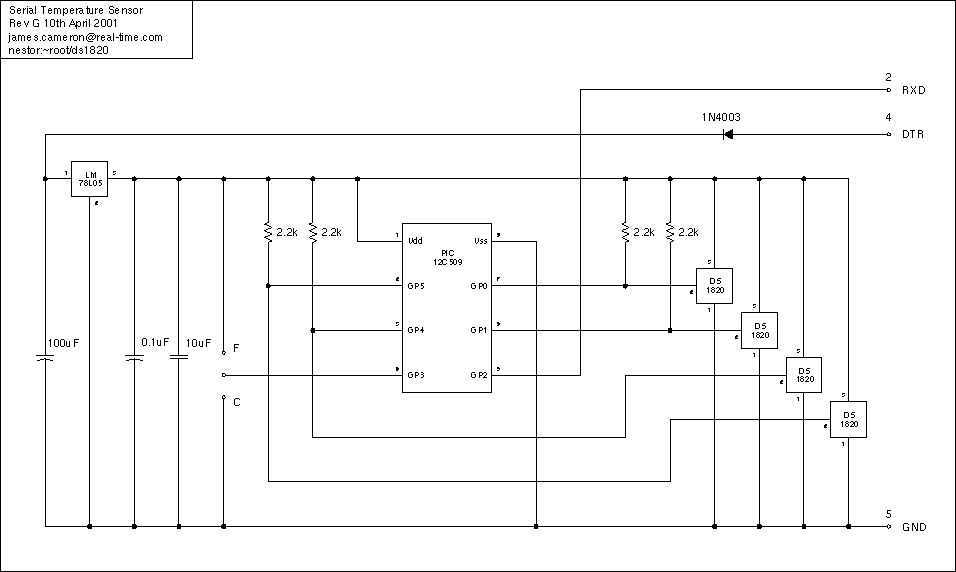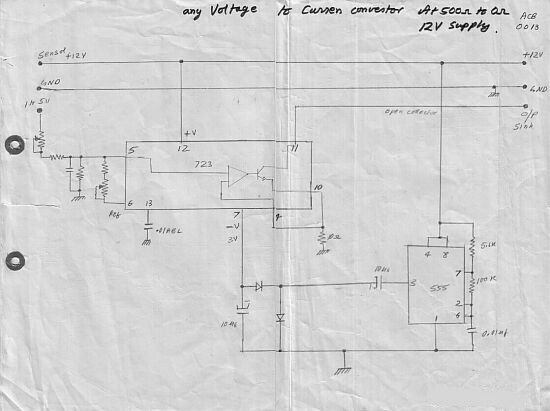
Frost AlarmCircuit Project

The thermistor utilized has a resistance of 15k ohms at 25 degrees Celsius and 45k ohms at 0 degrees Celsius. A suitable bead-type thermistor can be sourced from the Maplin catalogue. The inclusion of a 100k potentiometer enables this circuit to activate over a broad temperature range. A small degree of hysteresis is incorporated through the use of a 270k ohm resistor, which helps to prevent relay chatter when the temperature is close to the switching threshold of the circuit.
The circuit operates by leveraging the temperature-dependent resistance characteristics of the thermistor, which changes its resistance in response to temperature variations. At 25 degrees Celsius, the thermistor's resistance is 15k ohms, indicating a relatively low resistance state. As the temperature decreases to 0 degrees Celsius, the resistance increases to 45k ohms. This property allows the thermistor to serve as a temperature sensor in the circuit.
The 100k potentiometer is strategically integrated to provide an adjustable threshold for the circuit's activation. By varying the resistance of the potentiometer, the user can set the desired temperature at which the circuit will trigger. This feature is particularly beneficial in applications where precise temperature control is necessary.
The 270k ohm resistor introduces hysteresis into the circuit, which is a crucial aspect for stabilizing the operation of the relay. Without hysteresis, the relay could rapidly turn on and off, causing what is known as "chatter," particularly when the temperature hovers around the set threshold. By incorporating this resistor, the circuit ensures that once the temperature crosses the threshold, the relay will remain activated until the temperature falls below a certain lower limit, thereby enhancing the reliability and performance of the system.
Overall, this circuit design effectively utilizes a thermistor, a potentiometer, and a resistor to create a temperature-sensitive relay control system, suitable for various applications where temperature monitoring and control are required.The thermistor used has a resistance of 15k at 25 degrees and 45k at 0 degrees celsius. A suitable bead type thermistor is found in the Maplin catalogue. The 100k pot allows this circuit to trigger over a wide range of temperatures. A slight amount of hysteresis is provided by inclusion of the 270k resistor. This prevents relay chatter when temper ature is near the switching threshold of this circuit. 🔗 External reference
The circuit operates by leveraging the temperature-dependent resistance characteristics of the thermistor, which changes its resistance in response to temperature variations. At 25 degrees Celsius, the thermistor's resistance is 15k ohms, indicating a relatively low resistance state. As the temperature decreases to 0 degrees Celsius, the resistance increases to 45k ohms. This property allows the thermistor to serve as a temperature sensor in the circuit.
The 100k potentiometer is strategically integrated to provide an adjustable threshold for the circuit's activation. By varying the resistance of the potentiometer, the user can set the desired temperature at which the circuit will trigger. This feature is particularly beneficial in applications where precise temperature control is necessary.
The 270k ohm resistor introduces hysteresis into the circuit, which is a crucial aspect for stabilizing the operation of the relay. Without hysteresis, the relay could rapidly turn on and off, causing what is known as "chatter," particularly when the temperature hovers around the set threshold. By incorporating this resistor, the circuit ensures that once the temperature crosses the threshold, the relay will remain activated until the temperature falls below a certain lower limit, thereby enhancing the reliability and performance of the system.
Overall, this circuit design effectively utilizes a thermistor, a potentiometer, and a resistor to create a temperature-sensitive relay control system, suitable for various applications where temperature monitoring and control are required.The thermistor used has a resistance of 15k at 25 degrees and 45k at 0 degrees celsius. A suitable bead type thermistor is found in the Maplin catalogue. The 100k pot allows this circuit to trigger over a wide range of temperatures. A slight amount of hysteresis is provided by inclusion of the 270k resistor. This prevents relay chatter when temper ature is near the switching threshold of this circuit. 🔗 External reference





